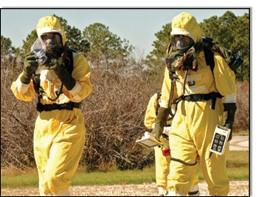Sample Collection Strategies and Procedures
Sampling strategies and procedures are developed to ensure that the largest amount of information about a contaminated area is obtained, while minimizing the sampling supplies and manpower required. EPA works in this area to fulfill a need for uniform processes to simplify sampling and analysis in response to an incident. Several resources, located within the Environmental Sampling and Analytical Methods (ESAM) repository, provide decision-makers, such as local, state and federal officials, with information to make sample collection more efficient. These resources include:
- Sample collection strategies to assist decision-makers in developing and carrying out efficient sampling operations that meet sampling goals and site clean-up objectives. The strategies are designed to assist incident commanders, project managers, state and local authorities, contractors, and enforcement personnel during clean-up following a contamination incident.

- Sample collection procedures are documents that provide step-by-step instructions for sample collection. The procedures are used during every phase of clean-up. Use of these pre-approved procedures by EPA approved sample collectors will ensure that quality samples are collected to support laboratory analysis. These procedures are found in the EPA’s Environmental Sampling and Analytical Methods Program under the Sample Collection Procedures and Strategies page.
- Sample Collection Information Documents (SCIDs) are quick reference guides that can be used when planning for and collecting samples throughout all phases of a clean-up. Information provided includes containers types, required sample volumes or weights, required preservation chemicals, holding or wait times, and how to package samples for shipment. This information helps ensure that required supplies are available at the contaminated site to support sample collection activities. A search tool has been developed to provide quick access to information contained in the SCIDs and is located on the ESAM SCIDs page.
